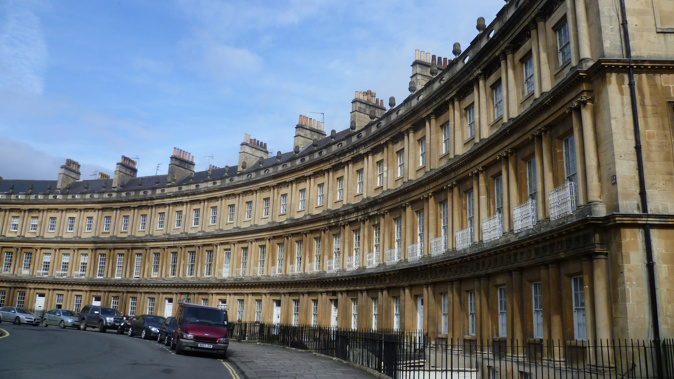
It was bucketing down when I last paid a visit to Bath, the UK’s august spa destination, steeped in Roman heritage and architectural flourishes that have elevated this irrepressibly gorgeous city onto the loftiest of pedestals. In fact, I’ve always thought an exacting test of a city’s grandeur, is how well it looks under grey, grizzled skies. And Bath passes the rain test in flying colours. Boasting Britain’s only natural thermal springs, surrender to the warm, mineral-rich waters which Celts and Romans immersed themselves in, over 2000 years ago.
At the centre of this World Heritage-listed ancient complex, is the Great Bath, a stirring monument of Roman prowess where natural hot water still flows through this lustrous temple and cavernous labyrinth of bathing rooms. Lording over the thermal baths is Bath Abbey, the last of the great English medieval churches to be built, in 1499. Following dissolution in 1539 it was sold into private ownership, before being given back to the city in 1572.
But its Georgian architecture that looms large as Bath’s calling card; a living, breathing museum of graciously curbed buildings, principally designed by masterly town planners, Ralph Allen and the two John Woods – the elder and the younger. Throughout the 1700s, the streets of Bath were flanked in the fashionable Palladian style and Georgian-style townhouses.
Size up the splendour of John Wood’s Queen Square, the gold-standard of Palladian design, built to provide visitors to the city the same sense of grandeur that they were accustomed to in their country estates. The Circus and the Royal Crescent are both masterpiece triumphs of urban living, with the artful curvature of these multi-storey stone buildings. And the grand stone Pulteney Bridge is the only historic bridge, apart from Florence’s Ponte Vecchio, that was built with shops incorporated into it.
Catering to the social needs of the ever growing city, John Wood the younger built Bath’s Assembly Rooms in 1769. This gracious complex comprising the Ball Room, Tea Room, Card Room and Octagon were the nerve-centre of 18th century society life. A wondrous collection of contemporary and period dress is showcased in the on-site Fashion Museum, which helps to rekindle a sense of the high-life and formal balls that the Assembly Rooms bore witness to.
On a similar note, if you’re a Jane Austen fan, don’t miss the eponymously named centre, that showcases Bath’s most famous resident. The centre provides a snapshot of life during Regency times and how living in Bath influenced Jane Austen’s life and her writing. Costumed guides, film footage and authentic period exhibits make this attraction a winner, topped off with a pot of real leaf tea in the upstairs Regency Tea Room.
Complete your explorations at Bath’s oldest house (1482) which serves its most celebrated local delicacy; the Sally Lunn bun. Lunn was a French refugee who established her bakery in Bath in 1680, and the same site continues to serve up those deliciously delicate semi sweet buns, best enjoyed with a pot of tea.
If you want to add some tingle-factor to a break in Bath , savour the atmosphere of the Queensberry Hotel, a delightful, playful boutique property, just a few minutes’ walk from the heart of the action. Originally commissioned as a residential home by the 8th Marquess of Queensberry in 1771, the hotel spreads across four classic Georgian terrace buildings. Combined into one property, the hotel houses 29 individually designed guestrooms, furnished in Georgian tradition ( including four poster beds and deep bathtubs ), spiced up with splashes of contemporary comfort.
The hotel’s owners, Laurence and Helen Beere, are determined to ensure guests don’t feel like they’re spending another night, in another hotel. Rather, they strive to make people feel as if they’re staying in a good friend’s super-smart, super-comfortable spare bedroom. I the homeliness of the hotel’s lounge, loaded with complimentary round-the-clock beverages and a wealth of glossy mags and fresh newspapers to rifle through. Pop down to the basement restaurant, the Olive Tree, which has cultivated a solid reputation for culinary excellence. Committed to sourcing locally from high-quality artisan food producers, menus are a creative combo of contemporary British flavours and Mediterranean influences. www.thequeensberry.co.uk
Mike Yardley is Newstalk ZB’s Travel Correspondent on Saturday Mornings with Jack Tame. 11.20am
Take your Radio, Podcasts and Music with you









